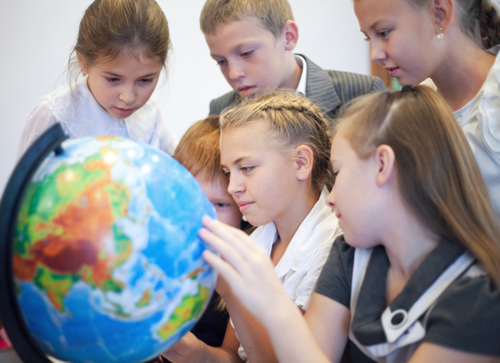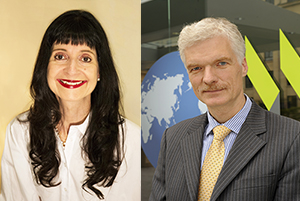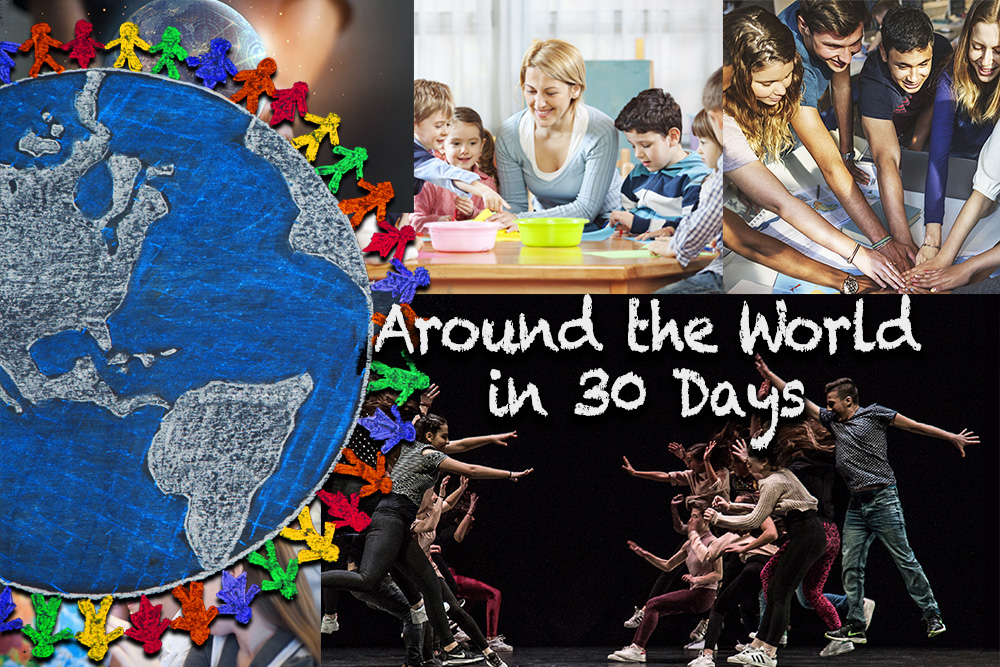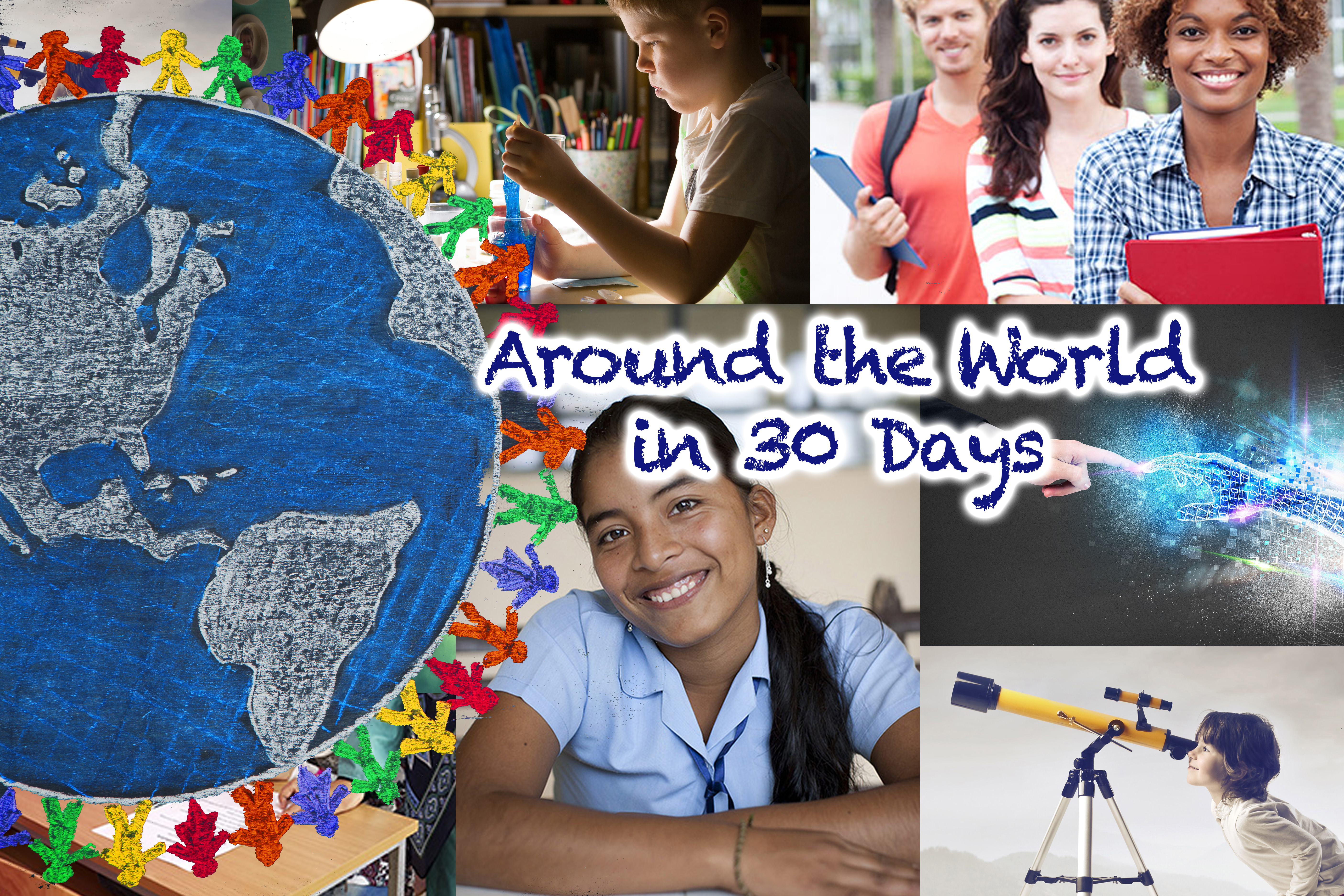“While the gap between what our societies need and what education systems provide continues to grow wider, the world provides so many good examples of educational success. Human beings need not be passive or inert. We have agency, the ability to anticipate and the power to frame our actions with purpose.” — Andreas Schleicher
We teach to the test. We have to. Tests are powerful tools. They tell us what people believe is important. What happens when vast amounts of what we test can be answered in seconds on our smartphones?
It is not uncommon, according to OECD principal Andreas Schleicher, to find “a few academics and government officials who determine what millions of students will learn” and these leaders “will often defend the scope and integrity of their discipline.” Schleicher should know. He’s the man behind the powerful, international PISA test and the person who’s currently leading over 70 countries in their efforts to design and implement education policies and practices for a new world. He is also the author of the new book, World Class: How to build a 21st-century school system. Among other things, the book reveals why it is so hard to move education systems forward, i.e. the politics, beliefs and fears of stakeholders that are often built around self-interests versus the interests of their learners.
Wanted:
Students that are smarter than their Smartphones.
Academics, teachers, government officials, parents, and business leaders brave enough to empower our children for their future versus our past.
Tests that assess what learning really matters for the fourth industrial revolution.
Joining me in The Global Search for Education is Andreas Schleicher.
“Since student learning time is limited and we seem unable to give up teaching things that may no longer be relevant, young people are held prisoners of the past, and schools lose the opportunity to develop valuable knowledge, skills and character qualities that are important for students’ success in the world.” — Andreas Schleicher
Andreas, how does one reform college entrance examination requirements?
If students are to be smarter than their smartphones, then tests need to look beyond whether students can reproduce information to determine, instead, whether they can extrapolate from what they know, and apply their knowledge creatively to novel situations. But there is another missing piece. Examinations are where the system of instruction begins, not where it ends. The key is how standards and examinations translate into the curriculum, instructional material and ultimately instructional practice. I have often been surprised at how little attention and resources the US devotes to developing the curriculum and instructional material and aligning it with education goals, standards, teacher development and examinations.
When studying national mathematics curricula for the development of the PISA 2003 assessment, I often asked myself why curricula devoted as much attention to teaching things like trigonometry and calculus. The answer cannot be found in the internal structure of the mathematics discipline, in the most meaningful learning progressions for students, or in the way mathematics is used in the world today. The answer lies in how mathematics was used generations ago by people measuring the size of their fields or performing advanced calculations that have long since been digitized.
Since student learning time is limited and we seem unable to give up teaching things that may no longer be relevant, young people are held prisoners of the past, and schools lose the opportunity to develop valuable knowledge, skills and character qualities that are important for students’ success in the world.
“The future will be about pairing the artificial intelligence of computers with the cognitive, social and emotional skills and values of humans. It will be our imagination, our awareness and our sense of responsibility that will enable us to harness the opportunities of the 21st century to shape the world for the better.” — Andreas Schleicher
In the last US election, the presidential candidates occasionally raised education, debating how to make it more accessible versus WHAT kind of education mattered for a changing world. Why aren’t policymakers connecting the dots?
Clearly, tuition in the US has gone out of sync with the value colleges generate for students. But the fact that we find rising numbers of college graduates all over the world who have difficulties finding a job, while at the same time employers say they cannot find the people with the skills they need, shows that questions of relevance and quality are equally pertinent.
The future will be about pairing the artificial intelligence of computers with the cognitive, social and emotional skills and values of humans. It will be our imagination, our awareness and our sense of responsibility that will enable us to harness the opportunities of the 21st century to shape the world for the better.
Tomorrow’s institutions will need to help students to think for themselves and join others, with empathy, in work and citizenship. They will need to help students develop a strong sense of right and wrong and sensitivity to the claims that others make. At work, at home and in the community, people will need a deep understanding of how others think, whether as scientists or artists, and how others live, in different cultures and traditions. Whatever tasks machines may be taking over from humans at work, the demands on our capabilities to contribute meaningfully to social and civic life will keep rising.
Should academics be allowed to control standards given their lack of knowledge of real-world skills? Should it be an interdisciplinary approach?
There are many ways how schools can better integrate the worlds of learning and the worlds of work, and there are many good examples of career and technical education. It’s always a question of balance, employers are very good in telling you what knowledge and skills they need today, but they are often not very good in anticipating the qualities that will be the key to success tomorrow.
What is important is to think more systematically about what we want to achieve from the design of curricula, rather than continuing to add more “stuff” to what is being taught. Curricula need to remain true to the disciplines, while aiming at interdisciplinary learning and building students’ capacity to see problems through multiple lenses. Curricula need to balance knowledge of discipline content with knowledge about the underlying nature and principles of the disciplines. To help students address unknown future problems, curricula also need to focus on areas with the highest transfer value. And to bring teachers along with this idea, they need to be explicit about the theory of action for how this transfer value occurs. They need to balance cognitive, social and emotional aspects of learning, and help teachers make shared responsibility among students part of the learning process.
“The reason why it is so hard to move school systems is that there is a much larger invisible part under the waterline. This invisible part is about the interests, beliefs, motivations and fears of the people who are involved in education, parents and teachers included.” — Andreas Schleicher
Bridging the skills gap is about vision and about taking risks often without sufficient proof and research. Thoughts?
Our knowledge about what works in education has really improved vastly. It is true that digitalization has contributed to the rise in populism and “post-truth” societies that can work against rational policy making. But the very same forces, whether in the form of more and better data or new statistical and analytical tools, have also massively expanded the scope and power of social research to create a more evidence-based environment which can help policy-makers lower the political cost of action, and increase the political cost of inaction.
To transform schooling at scale, we need not just a radical vision of what is possible, but also smart strategies that help make change in education happen. The road of educational reform is littered with good ideas that were poorly implemented. The laws, regulations, structures and institutions on which educational leaders tend to focus when changing schools are just like the small visible tip of an iceberg. The reason why it is so hard to move school systems is that there is a much larger invisible part under the waterline. This invisible part is about the interests, beliefs, motivations and fears of the people who are involved in education, parents and teachers included. This is where unexpected collisions occur. That is why educational leaders are rarely successful with reform unless they build a shared understanding and collective ownership for change, and unless they build capacity and create the right policy climate, with accountability measures designed to encourage innovation and development rather than compliance.
The education crisis, mirrored in flat-lining educational outcomes despite rising costs is, at least in part, an education leadership crisis. Finding adequate and forward-looking responses to the interrelated changes in technology, globalization and the environment is ultimately a question of leadership. For schools to be entrepreneurial and able to adapt, system-leaders need to be able to mobilize the human, social and financial resources needed for innovation; to work as social entrepreneurs both within and beyond their own organizations; and to build stronger linkages across sectors and countries, to establish partnerships with government leaders, social entrepreneurs, business executives, researchers and civil society. System leaders need to be strategic, that is aware of how organizational policies and practices can either facilitate or inhibit transformation and be ready to confront the system where it inhibits change. They need to be design thinkers, capable of recognizing emerging trends and patterns and see how these might benefit or obstruct the innovation they want to achieve. They need to be politically savvy, in terms of working with organizations as well as people. They need to use their knowledge about what motivates people to get them to support their plans for change, and they need to use their understanding of power and influence to build the alliances and coalitions needed to get things done.
Many teachers and schools are ready for that. To encourage their growth, policy needs to shift toward inspiring and enabling innovation, identifying and sharing best practice. That shift in policy will need to be built on trust: Trust in education, in educational institutions, in schools and teachers, in students and communities. In all public services, trust is an essential part of good governance. Trust is a key determinant of where great people want to work. But trust cannot be legislated and mandated and that is why it is so hard to build into traditional administrative structures. And trust is always intentional. Trust can only be nurtured and inspired through healthy relationships and constructive transparency. At a time when command and control systems are weakening, building trust is the most promising way to advance and fuel modern education systems.
What do you want people to take away from your book?
While the gap between what our societies need and what education systems provide continues to grow wider, the world provides so many good examples of educational success. Human beings need not be passive or inert. We have agency, the ability to anticipate and the power to frame our actions with purpose. I understood that when I saw the 10% most disadvantaged students in Shanghai outperforming the 10% wealthiest American students on the PISA 2012 mathematics assessment. I decided to write this book when I saw children from the poorest neighborhoods of Shanghai learning – with joy – from Shanghai’s best teachers. It was then that I realized that universal high-quality education is an attainable goal.
(All Photos are courtesy of CMRubinWorld)
C. M. Rubin and Andreas Schleicher
Join me and globally renowned thought leaders including Sir Michael Barber (UK), Dr. Michael Block (U.S.), Dr. Leon Botstein (U.S.), Professor Clay Christensen (U.S.), Dr. Linda Darling-Hammond (U.S.), Dr. MadhavChavan (India), Charles Fadel (U.S.), Professor Michael Fullan (Canada), Professor Howard Gardner (U.S.), Professor Andy Hargreaves (U.S.), Professor Yvonne Hellman (The Netherlands), Professor Kristin Helstad (Norway), Jean Hendrickson (U.S.), Professor Rose Hipkins (New Zealand), Professor Cornelia Hoogland (Canada), Honourable Jeff Johnson (Canada), Mme. Chantal Kaufmann (Belgium), Dr. EijaKauppinen (Finland), State Secretary TapioKosunen (Finland), Professor Dominique Lafontaine (Belgium), Professor Hugh Lauder (UK), Lord Ken Macdonald (UK), Professor Geoff Masters (Australia), Professor Barry McGaw (Australia), Shiv Nadar (India), Professor R. Natarajan (India), Dr. Pak Tee Ng (Singapore), Dr. Denise Pope (US), Sridhar Rajagopalan (India), Dr. Diane Ravitch (U.S.), Richard Wilson Riley (U.S.), Sir Ken Robinson (UK), Professor Pasi Sahlberg (Finland), Professor Manabu Sato (Japan), Andreas Schleicher (PISA, OECD), Dr. Anthony Seldon (UK), Dr. David Shaffer (U.S.), Dr. Kirsten Sivesind (Norway), Chancellor Stephen Spahn (U.S.), Yves Theze (LyceeFrancais U.S.), Professor Charles Ungerleider (Canada), Professor Tony Wagner (U.S.), Sir David Watson (UK), Professor Dylan Wiliam (UK), Dr. Mark Wormald (UK), Professor Theo Wubbels (The Netherlands), Professor Michael Young (UK), and Professor Minxuan Zhang (China) as they explore the big picture education questions that all nations face today.
The Global Search for Education Community Page
C. M. Rubin is the author of two widely read online series for which she received a 2011 Upton Sinclair award, “The Global Search for Education” and “How Will We Read?” She is also the author of three bestselling books, includingThe Real Alice in Wonderland, is the publisher of CMRubinWorld and is a Disruptor Foundation Fellow.
Follow C. M. Rubin on Twitter: www.twitter.com/@cmrubinworld










Recent Comments